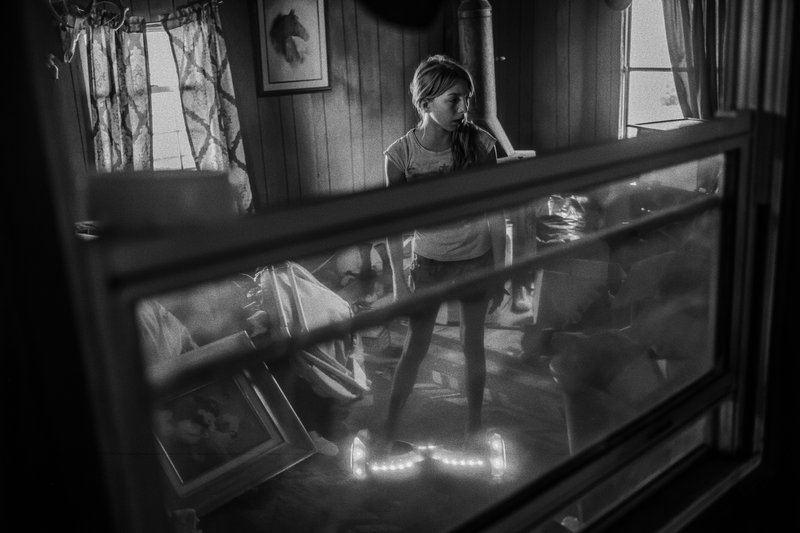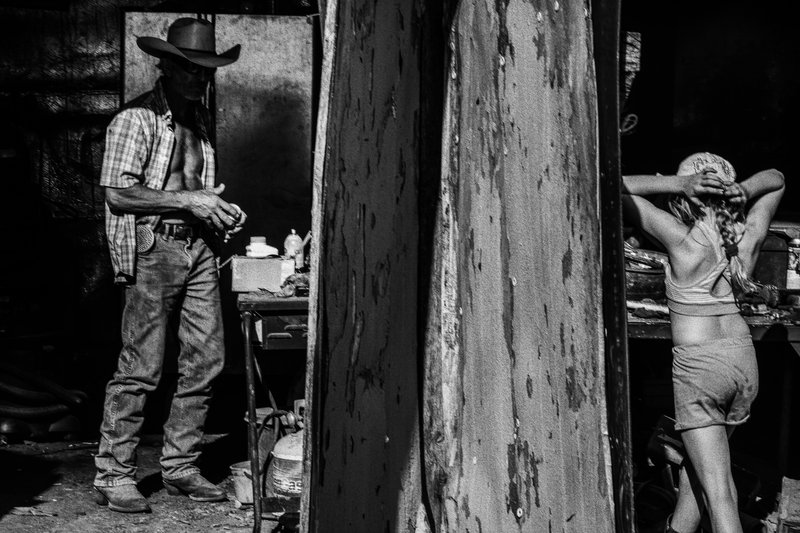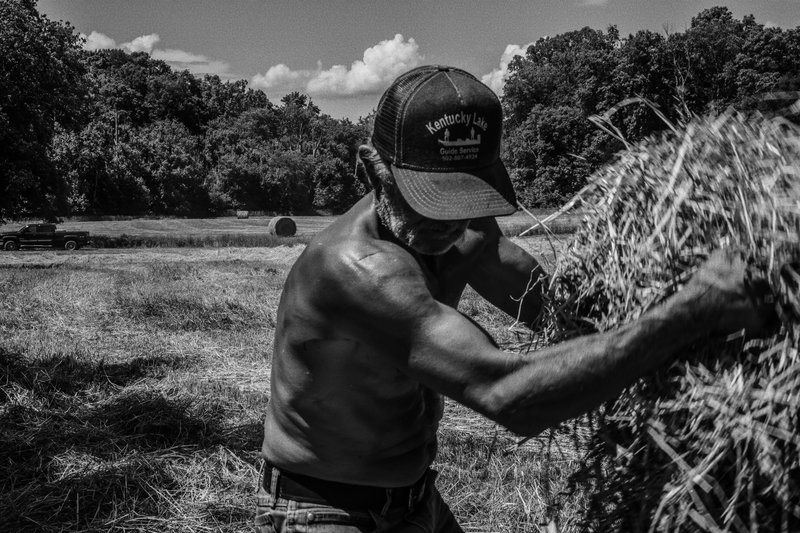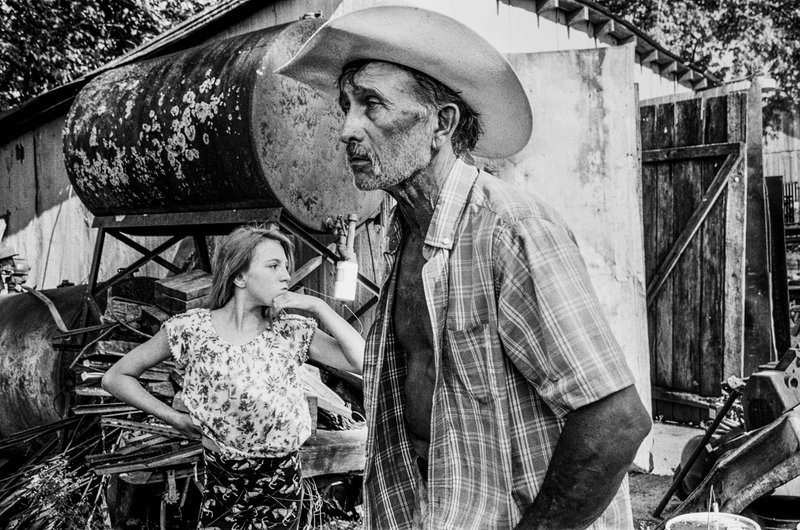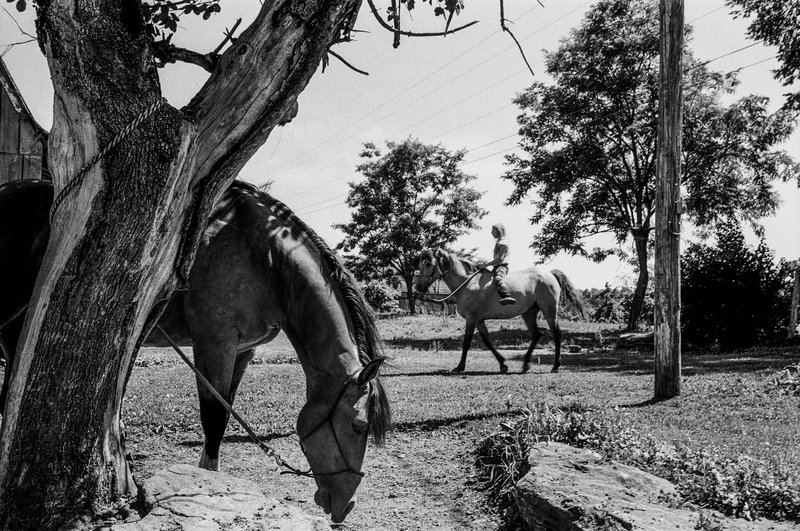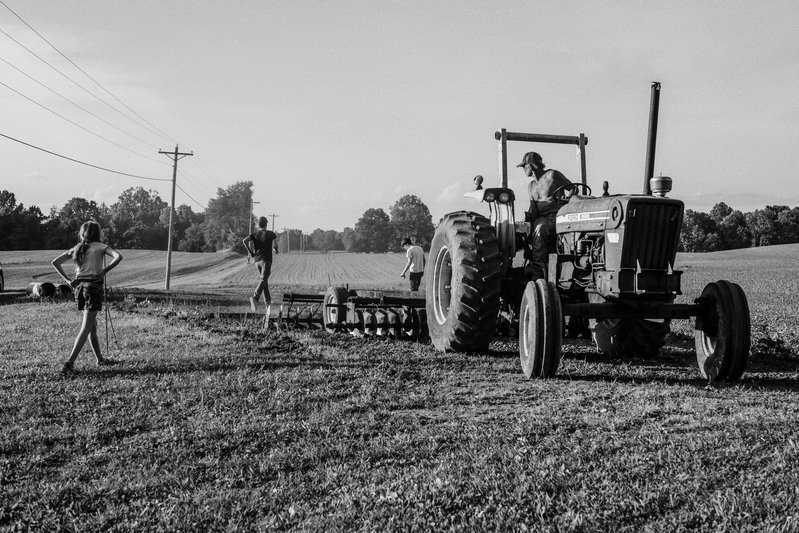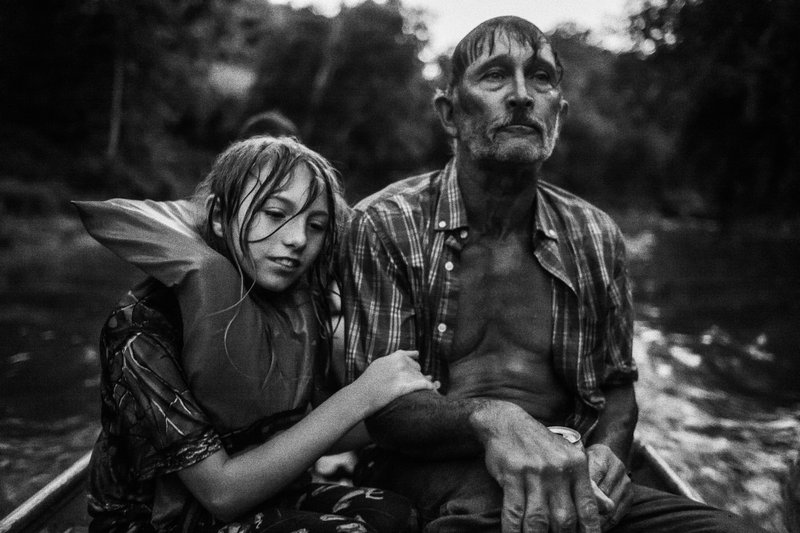Finalist: The Last Generation
This Premier category recognizes a photographer’s extended story or essay about the everyday life of the people who make up a community. The purpose is to encourage attention to the small events in life that are often overshadowed by the news of the day and to celebrate those images that reflect the work and dreams of humankind.
A “community” may be defined as a neighborhood, a town, a small commune, a rural agricultural area, a city subdivision, or socioeconomic region.
The Last Generation
The sun is setting on midsize farms in America, and Jackie Allen can feel it. For 40 years, he’s summoned food from fertile ground under the Loretto Hills of Kentucky, where traditional family farms once dotted the landscape. He’s even made a good living from it at times. But as agricultural producers across the country respond to the most recent Census of Agriculture, new data is expected to confirm an unforgiving farm economy taking root that favors the extremes – where midsize farms like his are forced to get big, get out, or adapt to preserve land and legacy. Ironically, the world has never needed the Allen family like it needs them today. Global demand for agricultural exports is on the rise, and it’s expected to grow 60 percent by 2050. Yet between 1948 and 2015, more than four million farms disappeared in the United States, with more than half of all farmers saying they lost money doing it in the last decade. Dominating this exodus are farmers like the Allens – the midsize land owners, tenant farmers and generational homesteaders who suddenly find themselves too small to compete with the giants of agribusiness, and too large to appeal to the developing micro-farming industry. Dubbed the “hollowing out” of American agriculture, this phenomenon of the disappearing middle is actively shaping our economies, our ecosystems, and most importantly, the health of our rural communities. For the Allen’s, keeping up with such a volatile market is like pining for daylight in the eleventh hour. Each day is not without challenges. Yet the spirit of self-sufficiency, creative problem-solving and a sage-like wisdom that has defined American farmers for generations is still strong among those who remain, and the Allens are no exception. So with his granddaughter in tow, “Jackrabbit” Allen is diversifying – earning money when he can by repairing old farm equipment, and breaking horses for Kentucky’s wealthier farmers. Together they’re cultivating a new story for themselves marked by resilience and grit. And as I walk beside them in the field, something about their relationship to one another, and to the land itself, feels idyllic – worth preserving. The Last Generation is a developing portrait of the Allen family, and others like them, who represent the decline of small-scale, family-run farms in America. It’s a document of an evaporating way of life, a record of what stands to be lost, and a reflection on America’s ever-changing relationship to the land.
The Last Generation
The sun is setting on midsize farms in America, and Jackie Allen can feel it. For 40 years, he’s summoned food from fertile ground under the Loretto Hills of Kentucky, where traditional family farms once dotted the landscape. He’s even made a good living from it at times. But as agricultural producers across the country respond to the most recent Census of Agriculture, new data is expected to confirm an unforgiving farm economy taking root that favors the extremes – where midsize farms like his are forced to get big, get out, or adapt to preserve land and legacy. Ironically, the world has never needed the Allen family like it needs them today. Global demand for agricultural exports is on the rise, and it’s expected to grow 60 percent by 2050. Yet between 1948 and 2015, more than four million farms disappeared in the United States, with more than half of all farmers saying they lost money doing it in the last decade. Dominating this exodus are farmers like the Allens – the midsize land owners, tenant farmers and generational homesteaders who suddenly find themselves too small to compete with the giants of agribusiness, and too large to appeal to the developing micro-farming industry. Dubbed the “hollowing out” of American agriculture, this phenomenon of the disappearing middle is actively shaping our economies, our ecosystems, and most importantly, the health of our rural communities. For the Allen’s, keeping up with such a volatile market is like pining for daylight in the eleventh hour. Each day is not without challenges. Yet the spirit of self-sufficiency, creative problem-solving and a sage-like wisdom that has defined American farmers for generations is still strong among those who remain, and the Allens are no exception. So with his granddaughter in tow, “Jackrabbit” Allen is diversifying – earning money when he can by repairing old farm equipment, and breaking horses for Kentucky’s wealthier farmers. Together they’re cultivating a new story for themselves marked by resilience and grit. And as I walk beside them in the field, something about their relationship to one another, and to the land itself, feels idyllic – worth preserving. The Last Generation is a developing portrait of the Allen family, and others like them, who represent the decline of small-scale, family-run farms in America. It’s a document of an evaporating way of life, a record of what stands to be lost, and a reflection on America’s ever-changing relationship to the land.




